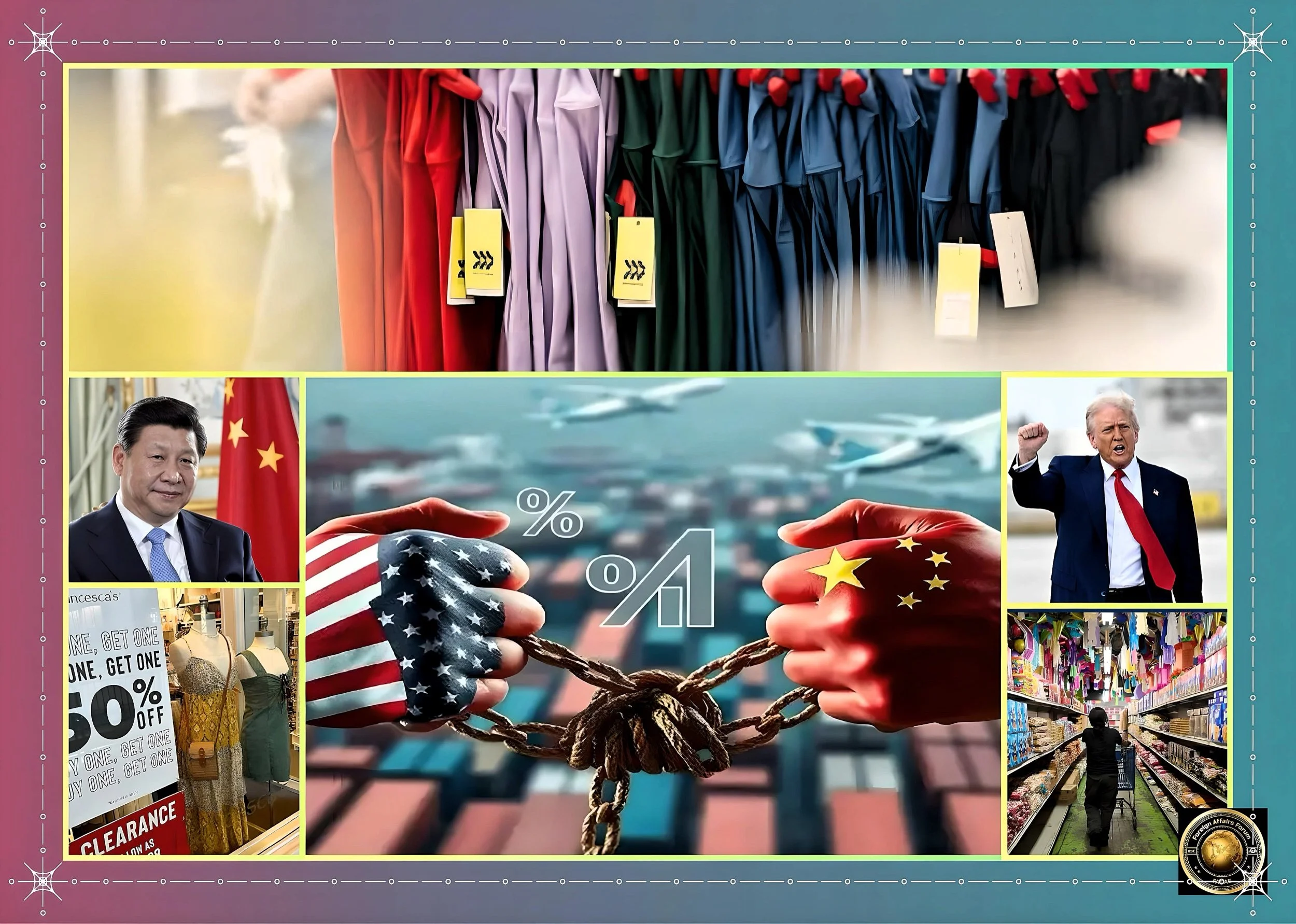The Far-Reaching Impact of US Tariffs on China: Economy, Industry, and iPhone Production
Introduction
The recent escalation of US tariffs on Chinese imports to an unprecedented 245% represents a significant development in the ongoing trade tensions between the world’s two largest economies.
This dramatic policy shift threatens to reshape global trade patterns, alter manufacturing landscapes, and potentially impact the daily lives of Chinese citizens.
The effects are apparent in the technology sector, where Apple’s iPhone production serves as a bellwether for broader economic trends.
The Escalating US Tariff Structure and Its Implications for China
The United States has recently implemented a complex and layered tariff structure against Chinese imports, representing a dramatic escalation in the ongoing trade conflict.
According to the White House, “China now faces up to a 245% tariff on imports to the United States due to its retaliatory actions”.
This unprecedented figure isn’t applied uniformly but varies considerably across different product categories.
The current tariff structure on Chinese goods comprises several components.
The total has reached 145% for many products, broken down as a 20% “fentanyl-related” penalty tariff and a 125% “reciprocal” tariff in response to China’s trade barriers.
However, specific specialized categories face even steeper rates. Medical supplies like needles and syringes are subject to the full 245% tariff, while lithium-ion batteries face a 173% duty, and semiconductor components are hit with a 70% levy.
China’s official response has been dismissive. The Chinese Ministry of Foreign Affairs declared it would disregard what it describes as President Trump’s “tariff numbers game.”
At the same time, the Ministry of Finance characterized the increasing tariffs as a “joke” due to their lack of “economic relevance.”
Beijing has retaliated with its 125% tariffs on American products and implemented various non-tariff actions, such as restricting the distribution of Hollywood films and ordering its airlines to halt new deliveries of Boeing jets.
The timing of these tariffs is particularly challenging for China, which is already facing significant domestic economic pressures.
As Premier Li Qiang recently acknowledged, Chinese exporters must adapt to “profound” external shifts, highlighting the government’s growing concern about trade-dependent growth models.
Broader Economic Impact on Chinese Industry and Growth Forecasts
The escalating tariff war threatens to significantly disrupt trade between the United States and China, primarily due to the steep rise in exporters' expenses. Experts have indicated that if these tariffs remain in place, the impact on Chinese industry could be substantial and widespread.
Manufacturing and Export Sectors Under Pressure
These unprecedented tariffs will likely significantly impact Chinese exporters, particularly small consumer goods manufacturers that rely heavily on the US market.
Many businesses producing lower-cost items such as electronics, clothing, toys, and other consumer goods are vulnerable to the additional costs that the new tariffs impose.
These companies may struggle to absorb the additional costs without compromising their competitiveness or profit margins, potentially forcing them to explore alternative consumer markets to maintain sales.
The US remains an important export market for China. In 2024, China exported US$524.66 billion in goods to the US, accounting for nearly 15 percent of its total exports, according to Customs data.
This significant trade volume underscores the potential magnitude of the impact if tariffs remain in place.
Economic Growth Projections Revised Downward
China’s GDP grew by 5.3% in the first quarter of 2025 compared to last year's period, exceeding forecasts.
However, analysts are concerned that this momentum may decline as US tariffs threaten the Asian economic giant.
Growth is projected to slow substantially in the upcoming quarters as US tariffs weigh heavily on the vital export sector, intensifying pressure on Chinese authorities to implement additional supportive measures.
Central global investment banks have already reduced their GDP forecasts for China.
According to a Reuters survey, the economy is anticipated to expand at a modest 4.5% year-on-year in 2025. This declines from last year’s 5.0% growth and falls short of the official target of approximately 5.0%.
UBS took an even more pessimistic stance, revising its 2025 growth estimate for China from 4.3% to 4.0% based on the assumption that US tariff increases will remain in effect.
UBS analysts noted, “We believe the tariff shock presents unprecedented challenges for China’s exports and will lead to significant adjustments within the domestic economy.”
This assessment highlights the potential structural changes in China’s economy as it adapts to the reality of new trade.
Impact on Chinese Citizens’ Cost of Living and Economic Wellbeing
While the search results don’t directly address the impact on Chinese citizens’ cost of living, several inferences can be made based on the broader economic effects.
The combination of tariff pressures and domestic challenges creates a complex environment for ordinary Chinese citizens.
Employment and Income Effects
China's export sector has been a crucial source of employment for decades.
As US tariffs potentially reduce export volumes and force manufacturers to cut costs, this could significantly affect employment in manufacturing regions.
Small and medium-sized manufacturers that cannot easily pivot to new markets may face particular challenges, which could lead to layoffs or reduced working hours for their employees.
Analysts noted that downward pressure on GDP growth suggests a broader economic slowdown that could affect employment rates and income growth across multiple sectors.
This comes when China is already dealing with high youth unemployment and challenges in the property sector, which has traditionally been a significant source of wealth and economic security for many Chinese families.
Government Response and Consumer Support
The Chinese government appears to bolster domestic consumption as a countermeasure to declining export opportunities.
Recent data revealed that retail sales, a crucial measure of consumer activity, increased by 5.3% year-over-year in March, following a 4.0% gain in January-February.
This rise was fueled by significant double-digit increases in home electronics and furniture, aided by government incentives for consumer goods.
These policies suggest that Chinese authorities are attempting to shift the economic focus from external demand to internal consumption, which may help mitigate some negative impacts on citizens’ livelihoods.
However, the transition may not be smooth or quick enough to prevent short-term economic pain for workers in export-oriented industries.
Apple’s iPhone Production Shift and Its Economic Impact on China
Apple’s iPhone production has long been a significant component of China’s manufacturing ecosystem.
Still, recent geopolitical tensions and tariff policies have accelerated the diversification of Apple’s supply chain, with notable implications for the Chinese economy.
Apple’s Shifting Production Landscape
According to estimates from Evercore ISI, China still accounts for around 80% of Apple’s production capacity, with approximately 90% of iPhones assembled there by partners like Foxconn.
However, Apple has made concerted efforts to diversify its manufacturing base beyond China.
India now makes 14% of Apple’s global iPhones, while nearly 80% are still in China.
In recent years, India’s role has grown significantly, with Apple assembling $22 billion worth of iPhones in India in the 12 months ending March, a 60% jump over the previous year.
This means that one in five iPhones is now made in India, and industry experts believe India’s share of Apple’s global iPhone production could soon hit 30%.
The shift has accelerated in response to the tariff situation. In March alone, Apple airlifted nearly $2 billion in iPhones from India to the US to preempt Trump’s tariffs, according to Reuters.
Customs data shows Foxconn shipped $1.31 billion, and Tata Electronics exported $612 million of devices from India.
Dollar Impact on the Chinese Economy
The economic impact of reduced iPhone production in China is multifaceted. At a basic level, the value added in China from the manufacturing/assembly of each iPhone is around $8.
While this may seem small compared to the retail price, it represents significant economic activity when multiplied by the production volume.
According to Counterpoint Research estimates, Apple sells more than 220 million iPhones globally every year, and China’s share could decrease from 80% to 70% as India’s share increases.
The direct economic impact could be substantial.
If we conservatively estimate a 10% shift in production away from China, this could represent a loss of hundreds of millions of dollars in direct manufacturing value.
However, the full economic impact extends beyond just the direct manufacturing value.
The iPhone supply chain in China involves numerous companies providing components, logistics, and services.
Many of these suppliers have built facilities and developed expertise specifically for Apple’s production needs.
As production shifts elsewhere, these ancillary businesses may also see reduced demand, creating a multiplier effect throughout regional economies where iPhone production is concentrated.
Broader Implications for China’s Manufacturing Position
Apple’s shifting production strategy reflects a more significant trend that could have long-term implications for China’s position in global manufacturing.
If a flagship company like Apple continues diversifying its production base, other technology firms may follow suit, particularly for products destined for the US market.
The tariff situation creates a stark price difference that drives these decisions.
Analysts estimate that if the tariffs remain, a $1,199 iPhone 16 Pro Max made in China could retail for nearly $2,000 in the U.S
At the same time, an identical model assembled in India might see a more minor increase, around $45, thanks to a temporary 90-day tariff pause for countries other than China.
This price disparity creates powerful incentives for Apple and other manufacturers to shift production away from China, potentially accelerating a trend that had already begun due to rising labor costs and geopolitical concerns.
The long-term consequence could be gradually erasing China’s manufacturing advantages in specific high-value electronics categories.
Conclusion
The US's imposition of 245% tariffs on Chinese goods represents a significant escalation in trade tensions that threaten to reshape global economic relationships.
The impacts are likely to be felt across multiple dimensions of China's economy, from macroeconomic growth rates to specific manufacturing sectors like smartphone production.
While China’s official response has been dismissive, the tangible effects are already seen in revised growth forecasts and strategic manufacturing shifts by companies like Apple.
The Chinese government appears to be responding by strengthening domestic consumption and seeking alternative export markets, but the transition may involve economic pain for specific sectors and regions.
The iPhone manufacturing shift serves as a microcosm of broader trends, highlighting how tariff policies can accelerate changes in global supply chains that might have occurred more gradually.
As these trends continue, both countries must adapt to a new economic reality that could permanently alter their trade relationship.
For Chinese citizens, the full impact on the cost of living and economic well-being remains to be seen but will likely depend on how successfully the government can navigate these changing economic currents and develop alternative sources of growth and employment.






